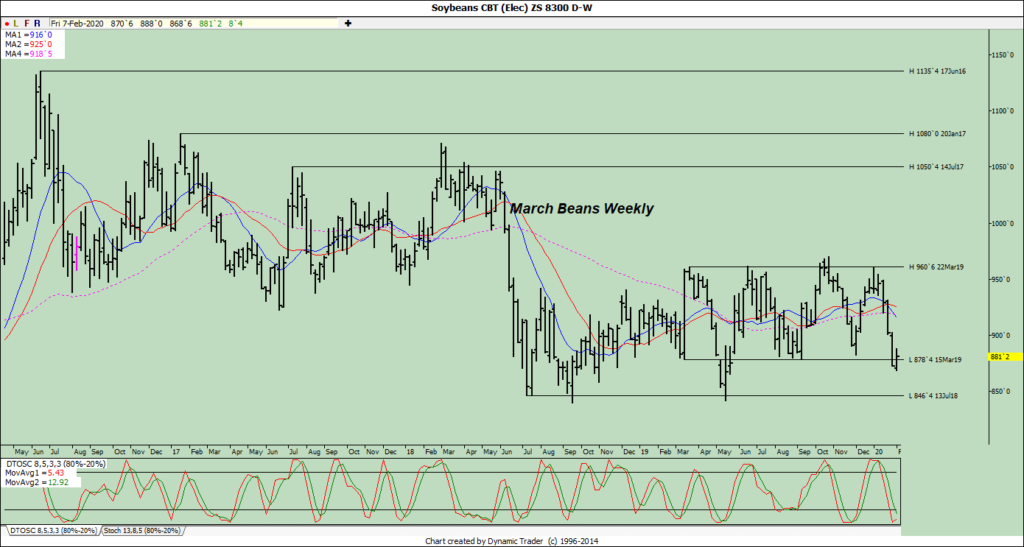They must be dancing in the streets in many towns across south-eastern Australia. After three years of drought and, of course, the devastating fires that have destroyed man, beast, crops, and structures, they have received the most significant rainfall in nearly 20-years. While this may or may not be the long-awaited drought-buster, it has reportedly put out a number of the fires that were still blazing and restored some hope for the people who live there. At last count, it is estimated that the fires have wiped out 11.7 million hectares (29 million acres) of wilderness, killed 33 people, more than a billion animals, and thousands of homes. One can only imagine that for those there, they had to believe they were very literally living in hell.
Grain and soy markets are certainly much calmer as we prepare to wrap up this week than they were when it began, as we have at least grown comfortable with the idea that China has stepped up efforts to manage the coronavirus outbreak. I do not imagine the thousands of people stranded on cruise ships in the far east may be overjoyed just yet through. Regardless, if we closed right now, for the week corn would be down 1 ½-cents, wheat up 1-cent and beans 8-cents higher and posting the first higher weekly close in the last four weeks.
Before we look at the trade estimates for the report next week, it should be pointed out that the USDA confirmed what most have suspected; they will not be making any adjustments to the export numbers in response to the Phase One trade agreement. The reason why is simple. They have nothing firm as to what the breakdown will be for the various commodities. According to Robert Johansson, the chief economist for the USDA, “There are a lot of different ways to get the Phase One agreement dollar figure. We do not really know what path that is going to be at this point in the year.” With that in mind, here are once again are some industry estimates; 2019/20 domestic ending stocks for corn are expected to total 1.864 billion bushels, which would be down a mere 28 million bushels from last month. Beans are expected to drop 32 million to 443 million and wheat 11 million to 954 million. Had China not experienced the coronavirus outbreak, I would not have been surprised to have seen numbers reduced just a bit more. Very little change is anticipated for the South American crops either. The average estimate for Brazilian beans is 123.65 MMT versus 123 and corn, 100.85 MMT instead of 101. For Argentina, the bean estimate is 53.15 MMT, up from 53.0 and corn at 49.97 instead of 50.0. World ending stocks for corn are expected to slip down to 297.19 MMT from 297.18, and wheat to be lowered to 287.44 compared with 288.08, but beans are expected to increase from 96.67 MMT to 96.90.
Not much to report in the macros as we finish out the week. Gold appears to have stabilized and is trading slightly higher for the day, energies remain under pressure with crude poised to close at the lowest levels since January a year ago, equities have softened this morning but are still on track to record a new high weekly close and the dollar remains strong and at current prices, will mark the highest weekly close since the first week of October.
